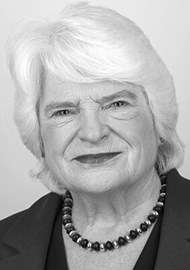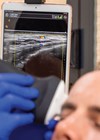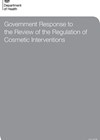As Paul Harris and Mark Henley discussed in a previous article (see here), certification of cosmetic surgery is being encouraged. Sally Taber, from the JCCP, outlines why non-surgical cosmetic interventions are arguably more urgently in need of effective regulation.
Regulation is required when the risks of public harm exceed acceptable limits. “Cosmetic interventions can have a profound impact on health and wellbeing. In other areas of life where this is the case, regulation provides safeguards to reduce harm.” [1].
For non-surgical cosmetics, Professor Sir Bruce Keogh in 2013 recommended statutory regulation, taking account of the risks. The Government in 2016 disagreed and said that no one has quantified that the risks are sufficient for the Government to intervene in this free market – this is a case for voluntary industry-led regulation.
In 2017 the impartial Nuffield Council on Bioethics investigated the use and provision of invasive, non-reconstructive cosmetic procedures and could find no scientifically valid hard facts on the efficacy and safety of procedures in the aesthetics industry. “There is an absence of high-quality data with respect to Cosmetic interventions. Medicines and Healthcare products Regulatory Agency (MHRA) should require robust evidence both of safety and effectiveness with respect to claimed benefits before devices are placed on the market.” [2].
Without some form of regulation, we will never obtain that robust evidence.
New and different non-surgical techniques and substances arrive almost daily, without robust published evidence of safety or effectiveness. The industry needs to ensure that the consequent risks are known and provided for. Industry-wide data assembly is an essential starting point as could happen if the Joint Council of Cosmetic Practitioners (JCCP) was mandated by the professional regulators such as the General Medical Council (GMC), Nursing & Midwifery Council (NMC) or General Dental Council (GDC). JCCP has, awaiting this mandate, a data collection and assessment scheme based on the proven National Joint Registry run by the specialists Northgate Public Services. This will collect information on number and type of treatments, successful outcomes, etc. (practitioners will continue to report adverse events through the MHRA Yellow Card Scheme). Given widespread buy-in by practitioners, this will derive the hard evidence of performance. Benchmarking will enable all practitioners in the industry to improve efficacy and safety in their performance.
Ensuring safe cosmetic interventions demands that practitioners possess appropriate knowledge and skills. But how much knowledge and what precise skills? How does a patient know that the practitioner she / he has chosen can deliver the result that is wanted? Beauty therapist and hairdresser ‘trainers’ using such terminology as “accredited route with an awarding body that will enable you to progress from Level 4 to Level 7” are fantasising. Fake claims, fake qualifications lead only to fake treatments and real danger to patients.
The British Association of Beauty Therapy & Cosmetology (BABTAC) are the leading awarding body, established in 1977 to insure and represent qualified therapists, the Confederation of International Beauty Therapy (CIBTAC), raise the profile of the excellent work that beauty therapists do. But, rightly, BABTAC and CIBTAC do not include injectable techniques within the legitimate beauty therapy portfolio of treatments.
The unique characteristic of a true profession is that it specifies, with authority based on an evidence-base, levels of knowledge and skill, achieved through study and training which match the complexity of the work. All this has now been put together by the Cosmetic Practice Standards Authority (CPSA). Training providers who train to these standards are being registered by the JCCP. But the industry is split, and many questionable providers have not yet reached these standards. These questionable providers are even using the terminology of ‘uni’, when they are not a university; ‘academy’ when they are not; and publicly offer access to remote prescribing of a prescription only drug (which contravenes the Medicines Act).
To reassure potential patients, a public register of qualified practitioners is essential. This is already in place as the JCCP, but registrations are slow so far.
There are 27 authorities identified by the Nuffield Council of Bioethics whose laws bear directly upon the cosmetic industry. Their rules are not designed specifically for the cosmetic industry and are therefore incoherent, incomplete and often unrelated to the needs of patient safety. There is much to be done to improve this risky situation. The non-surgical cosmetic intervention practitioners who aspire to be called a profession should now be demanding a mechanism to influence these authorities.
Societal pressures to conform to physical ideals make many patients vulnerable. A code of practice applied throughout the industry is the best safeguard which is fully supported by the professional regulators.
Patient before profit, not profit before patient
Providers and practitioners must recognise that trading in elective cosmetic interventions requires the same standards of conduct, premises, record keeping, patient care, continued professional development, as any doctor, dentist, pharmacist or registered nurse working for the NHS or the independent sector would expect to provide. Cutting corners is not an option if this is to be a reputable and safe profession.
The industry should only support JCCP registered trainers who train adequately to recognised standards.
What should be done about those who are not on the voluntary register as being appropriately trained, or not observing the industry professional code of practice, or not using recognised substances or techniques, or advertising improperly?
The remaining problem for ethical, fully qualified providers is how to eliminate fake, unqualified, unscrupulous and dangerous providers. We need to get the word out to the public. Only an industry-wide usage of recognised indicators of assured quality can do this, although Government, manufacturers, trainers and providers will also need to work to a common goal of universal consumer recognition.
References
1. Department of Health. Review of the Regulation of Cosmetic Interventions – ‘The Keogh Review’.2013.
https://assets.publishing.service.gov.uk/
government/uploads/system/uploads/
attachment_data/file/192028/
Review_of_the_Regulation_of
_Cosmetic_Interventions.pdf
Last accessed 7 November 2019.
2. Nuffield Council on Bioethics. Cosmetic procedures: ethical issues. 2017.
http://nuffieldbioethics.org/
wp-content/uploads/
Cosmetic-procedures-full-report.pdf
Last accessed 7 November 2019.
COMMENTS ARE WELCOME









